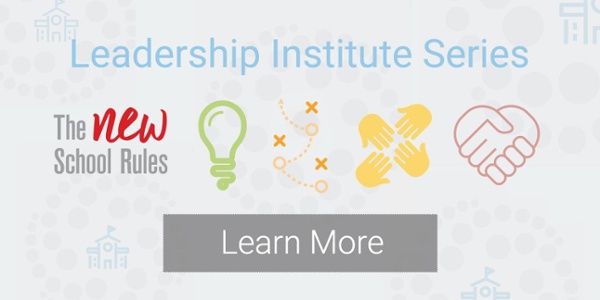
By: Andy Shaw on July 10th, 2019
Avoid the 49 Degree Rule: 4 Ways to Put People Before Policies
Sometimes, the really thought-provoking stuff just lands in your lap...or in the seat next to you.
On a recent flight, I was lucky enough to sit next to an employee of one of the major airlines, who shared anecdotes about the culture change she experienced after the airline she worked for was acquired by another carrier. The most compelling anecdote she shared: the “49-Degree Rule”. Apparently, the airline she’d originally worked for had been very focused on the notion of employee autonomy and empowerment, but the acquisition came with a host of new rules and policies, including one that said employees were only permitted to wear their jackets at work when the ambient temperature was at or below 49° Fahrenheit. What??!!
There’s so much wrong with this policy, it’s hard to know where to begin. Certainly, the fact that someone clearly wasted their time deciding that 49° – rather than 50° or 48° – was the optimal jacket temperature. Even more importantly, think of the signal this sends to employees: “We don’t trust you enough to make decisions to balance your comfort and well-being with our professional appearance as an airline. And if we don’t trust you enough to decide when to wear a jacket, imagine all the other things we don’t think you’re grown-up enough to make decisions about.”
It’s easy to critique the airline, of course. But how many of us have policies in our schools, districts, or organizations that represent our own version of the 49-Degree Rule? (Answer - every single one of us). So what can we do to put people before policies?
Focus on the “why”
It’s impossible to overstate the importance of focusing on purpose when trying to drive behavior within an organization. I remember a conversation, during my time as a school leader, with a teacher who consistently missed report card deadlines. Finally, I got fed up with the need for reminder emails, follow-up emails, and terse hallway, “What happened?” conversations. I pulled him into my office and said, “Did you know that every time you miss a deadline, it doubles Janet’s work? She has to re-run and redo the whole set.” Janet was our admin manager. His jaw dropped. “No,” he said, “I thought you just had that deadline to make sure we got them done.” I had taken it for granted that he would understand how the back-office process worked. After that conversation, he never missed another report card date. I was amazed at how often something like this happened: as a leader, I assumed that simply because I understood the reason for a protocol or had explained it once in a staff meeting, others must understand the rationale for things as clearly as I did. In almost every case, sitting down with a colleague and explaining why I needed them to do things differently (even when I knew I’d explained it before) got great results. No far-reaching policy changes needed.
Beware the “policy as one-size-fits-all” approach
The Pareto principle tells us that 20% of our people – employees, parents, or students, depending on the context – might very well demand 80% of our time, effort, or patience. It’s crucial that we avoid the instinct to create a new policy every time that 20% are misbehaving. You’ll get farther spending your time addressing what’s going on with that 20%, rather than creating a policy that applies to everyone. After all, many of that 20% of the group will be the same ones who ignore whatever policy you end up creating. Why do most of us jump so quickly to policy? Often because it allows us to avoid those hard conversations with the offenders. So take a deep breath, crank your courage up a notch, and know that if you approach those conversations with an open mind and a focus on curiosity, you’re certain to walk away with a deeper understanding of why your colleagues aren’t doing things the way you hoped they would. The reason might not be what you think!
Are you looking for more in-depth learning around innovative leadership practices? Whether you're a school or district leader, a coach, or a teacher – our comprehensive guide to leadership development has resources to help transform you as a leader and impact your team's culture and outcomes.
Don’t forget to appreciate those doing it right already
A surefire way to demoralize the silent majority of folks who are already doing the right thing is to make a rule that suggests you think everyone’s dropping the ball. Instead, in parallel to your inquiries with the 20%, it might make sense to show a little appreciation to the 80% of folks who are managing to get it right without the need for an additional policy. Avoid broad, vague announcements of praise and instead find ways to appreciate in specific and individual ways, as that approach often goes a lot further.
Invite individuals and teams to find their own solutions
Effective organizations are those that distribute power throughout the organization and that create empowered teams who can make their own decisions about how to support the organization’s “why”. I’m not sure why teams of flight attendants aren’t deemed capable of making wardrobe decisions based on the weather at their site, but I do know that I love visiting districts where schools, departments, and teams of teachers are trusted to create their own approaches based on their context and in support of a clear organizational vision. And if a policy is necessary, find ways to make sure teams are empowered to safely violate the policy in the interest of broader goals and values.
What’s next for you as you think about people and policies? What if you set a goal to leverage your people a little more, and your policies a little less, in the coming school year? What if you even identified whatever your organization’s analog to the 49-Degree Rule is, and committed to taking it off the books this year? Let us know how your experiments go, and check out The NEW School Rules and the Education Elements innovative school leader competencies for more ideas on creating schools and workplaces that matter.
Are you ready to invest in professional development for yourself and your team? Check out our upcoming Leadership Institute Series, with events in July, September, October, November, and December. Learn about The NEW School Rules, Innovative District Leadership, Team Habits, Strategic Planning, Teacher Retention, and more.
About Andy Shaw
Andy Shaw is a Senior Design Principal on the Design & Implementation team, working with district and school teams to improve student outcomes through inclusive and intentional change processes. Andy has worked in education since 2002, first as a high school mathematics teacher and then for seven years as a high school administrator. Most recently, he served as the Dean of Curriculum and Innovation at The Bay School, a progressive high school in San Francisco, where he led a future-focused redesign of the school's curriculum, calendar, and bell schedule. Andy's passion is for process: keeping students, teachers and staff, school values, and culture at the heart of major initiatives. He holds a B.A in Mathematics from Bowdoin College and a Master's of Arts in Education Leadership from Teachers College at Columbia University. Andy is originally from Maryland and currently lives in Berkeley, CA.



